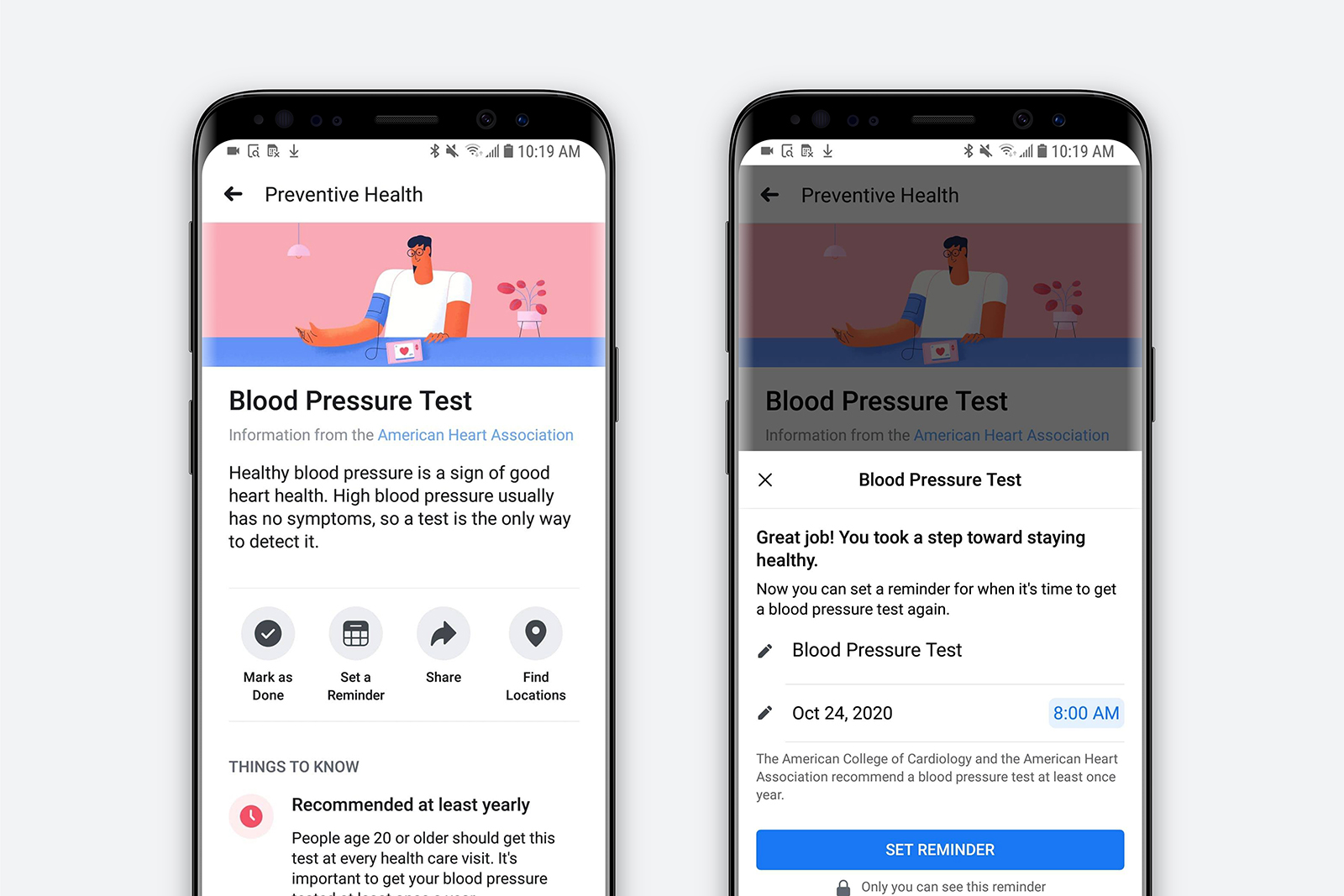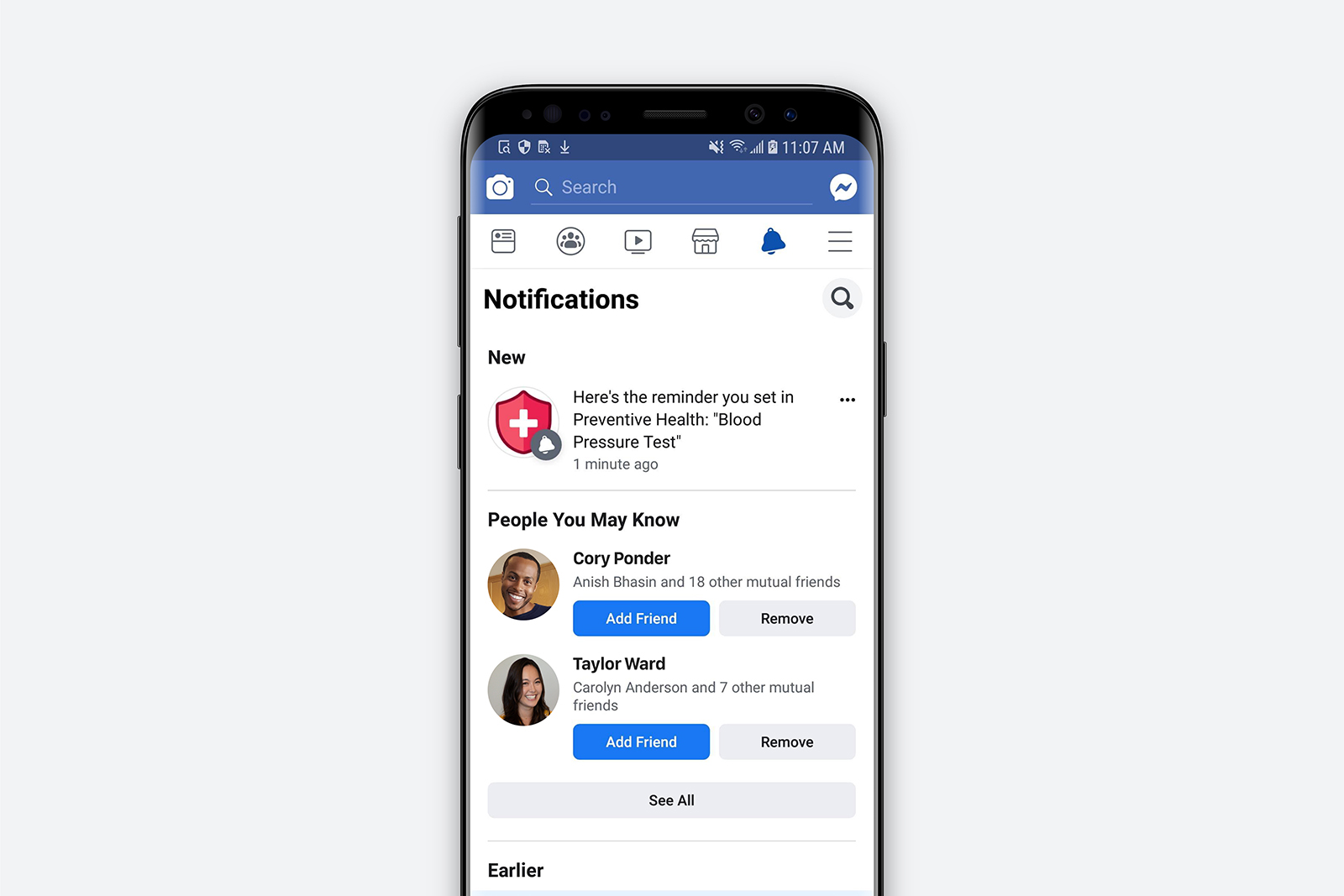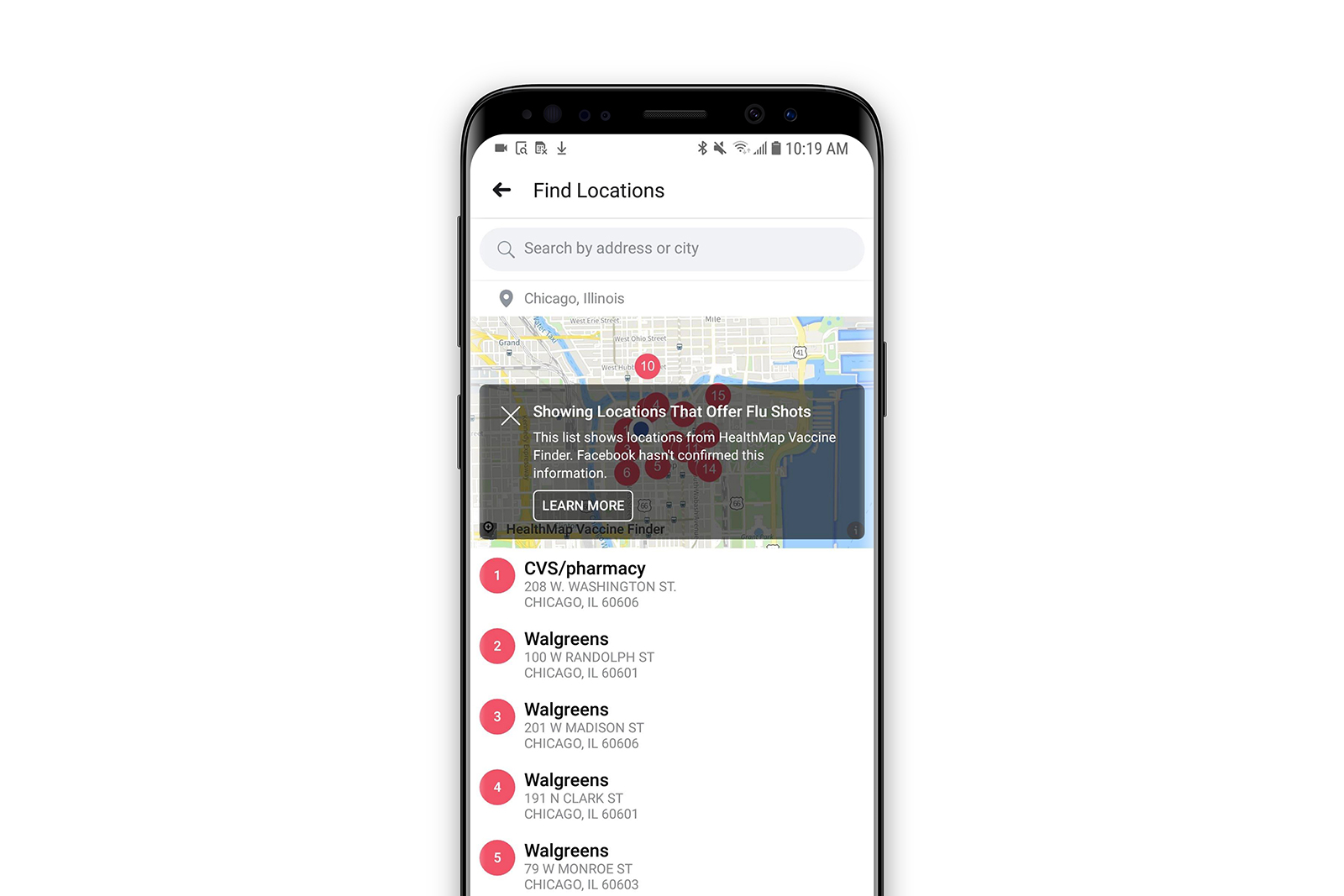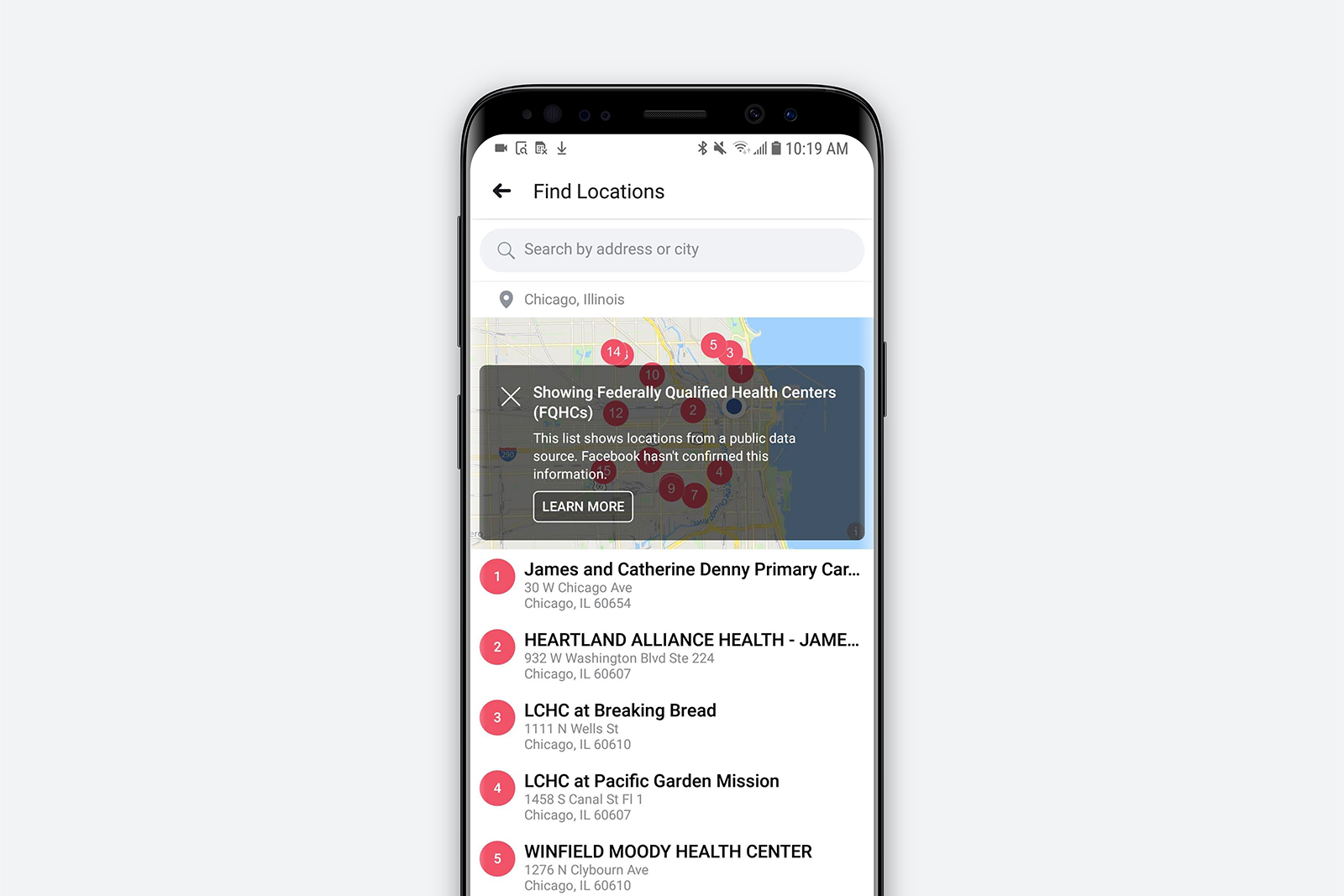
Facebook can already manage your online shopping, your job search, your news, and even your dating life — and now the social media platform wants to send you reminders when it’s time to get a flu shot or head in for a check-up. On Monday, October 28, Facebook launched Preventive Health, a tool that encourages users to get preventative tests and helps the uninsured find federally funded health centers. The tool launches as Facebook stunts the spread of anti-vax posts on the network.
Using profile data for age and gender, the Preventative Health tool suggests tests such as blood pressure checks, cholesterol tests, pap smears, and mammograms. From the tool, users can check an option saying that they’ve already had that test done and can set a reminder for when the next test is due, based on testing timelines from organizations like the American Heart Association and American Cancer Society.
At launch, the Preventative Health tool focuses on heart disease and cancer, the two leading causes of death in the U.S., according to the Center for Disease Control. But, the tool will also send reminders to get a flu shot ahead of flu season. The information in the tool is a result of Facebook working with organizations like the American Cancer Society, the American College of Cardiology, the American Heart Association, and the CDC.
Along with the options to set reminders and share the tool itself with friends, Preventative Health allows users to find locations for tests and shots nearby. The “find location” option searches for nearby health centers that are federally qualified, which offer services regardless of the ability to pay.
With the update, Facebook is essentially reminding users that it’s time to get a flu shot shortly after announcing that anti-vaccine posts will have limited reach on the network.
Facebook hasn’t had the best track record for user privacy lately — but the company promises that the information used in the new tool isn’t shared with friends. The company says the data can only be accessed by a select few
Many users, however, likely won’t even know the Preventive Health tool exists. Facebook says users have to search for the tool in the search bar to turn on those health reminders. In the past,







